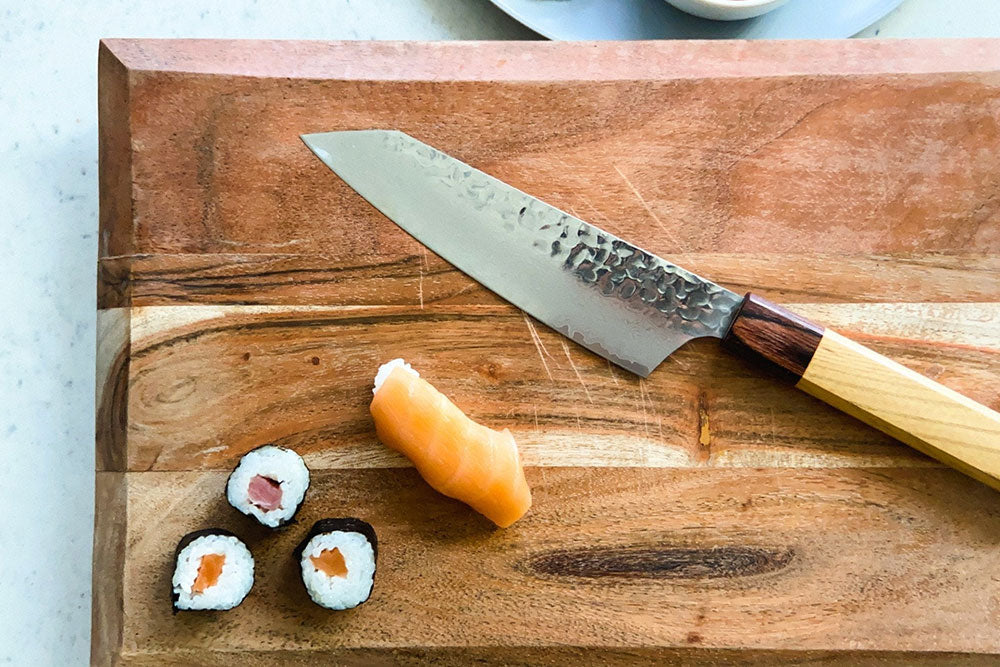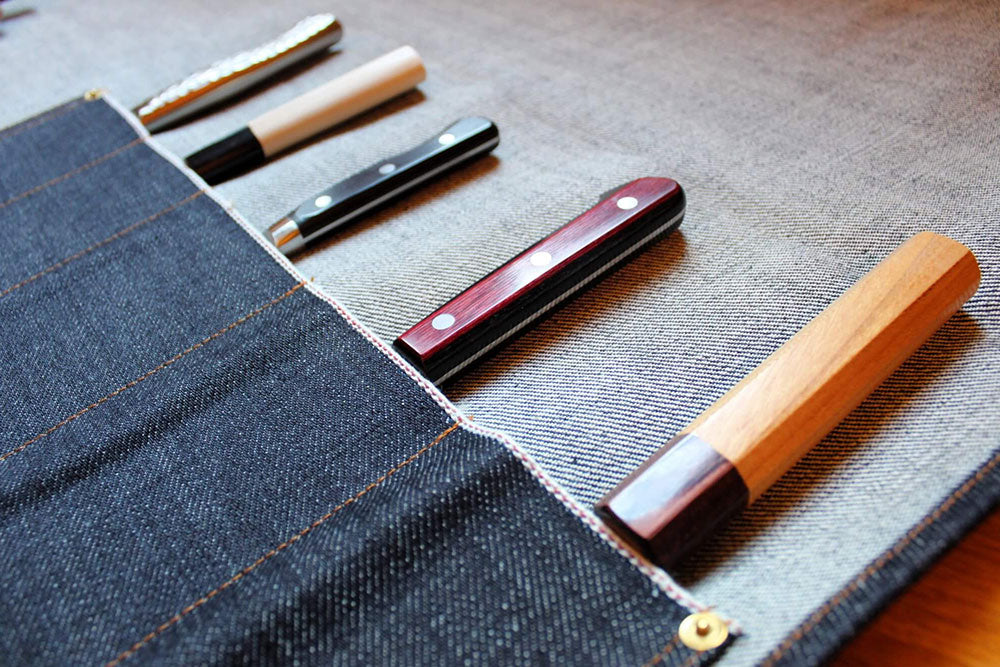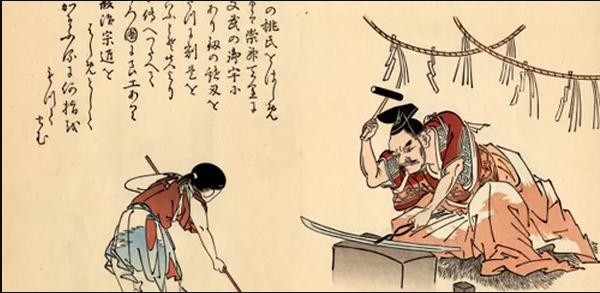
5 Best Japanese Knives For Home Chefs
The best Japanese knives for home chefs bring a level of precision and artistry that can transform everyday cooking into a refined culinary experience. Crafted through centuries-old traditions, these knives embody the dedication and meticulous craftsmanship that Japanese artisans are known for.
With their sharpness, balance, and durability, Japanese chef knives allow for a smoother, more controlled cut, improving the preparation process whether you're slicing vegetables, filleting fish, or handling more intricate tasks.
Unlike many Western-style knives, Japanese knives are designed with a focus on specialized performance. They’re crafted to meet the exacting standards of chefs, making them highly suitable for home kitchens as well. Each blade is honed to a fine edge, allowing home cooks to enjoy effortless slicing and precision cuts that retain the integrity of ingredients, necessary for those who want to raise their culinary skills.
As you check out the array of knives for chefs, you’ll discover distinct options that cater to different cooking styles and needs. From versatile, all-purpose chef knives to specialized blades made just for vegetables or sushi, Japanese knives offer a wide spectrum of functionality.
What Makes These the Best Japanese Knives For Home Chefs?
Japanese knives distinguish themselves with their distinct craftsmanship, material quality, and sharpness, setting them apart from many Western knives. At the heart of these differences is a commitment to traditional methods.
Japanese artisans have been perfecting the craft for centuries, drawing from techniques initially developed for sword-making. This heritage results in a knife that is both a functional kitchen tool and a work of art.
One of the most defining features of Japanese chef knives is their specialized steel. Frequently made from high-carbon steel or other unique alloys, these knives can achieve an incredibly fine edge while retaining remarkable sharpness over time.
Unlike Western-style chef knives, which are often heavier and thicker, Japanese knives are lightweight and honed to a thinner blade, allowing for precise, effortless cuts. This feature is imperative in Japanese cooking, where preserving the texture and appearance of ingredients is a huge concern.
Japanese knives also come in a wide array of styles, each designed for a specific purpose. From the all-purpose gyuto to the vegetable-focused nakiri, these knives give chefs, both professional and home-based, the right tool for every task. This specialization adds to the versatility of knives for chefs, because each type brings unique advantages that support the art and precision required in Japanese culinary techniques.
For home chefs, investing in one of the best Japanese knives for culinary creations is an opportunity to improve their skills. The sharpness and control offered by these blades reduce strain, making fine slicing and intricate cuts more manageable.
Not only does this lead to more visually appealing dishes, but it also heightens the overall cooking experience, promoting a deeper connection to the culinary process. Using a Japanese knife isn’t just about cutting—it’s about bringing artistry and tradition into everyday cooking.
What to Consider When Choosing a Japanese Knife
When selecting the Japanese chef knives, several things come into play to make sure the knife meets both functional needs and personal preferences. Knowing blade type, handle comfort, knife weight, and steel durability can help home chefs find the ideal knife suited to their cooking style and skill level.
One of the first things to consider is the blade type. Japanese knives come in different styles made for specific tasks. The gyuto, similar to a Western chef’s knife, is a versatile option that can handle a wide range of ingredients, making it a popular choice for home cooks. The santoku, another multipurpose blade, is slightly shorter and easier to control, perfect for slicing, dicing, and mincing.
For vegetable enthusiasts, the nakiri offers a rectangular blade that excels in clean, precise cuts through produce, making it a great tool for intricate preparations. Each of these Japanese chef knives provides a distinct advantage, allowing chefs to select a blade that complements their primary culinary focus.
Handle comfort and knife weight are also important. Japanese knives usually feature a lighter weight and balanced design, reducing hand fatigue during extended prep sessions. Handles may vary in material and shape; some are crafted from traditional wood, while others use resin composites. Finding a handle that feels secure and comfortable assists with control, especially for those who spend long hours in the kitchen.
Durability, particularly of the steel, is another consideration. High-carbon steel, commonly used in chef knives from Japan, maintains sharpness exceptionally well but may require specific care to prevent rust.
Balancing function with aesthetics also enriches the experience of owning a Japanese knife. Each blade often showcases elegant craftsmanship, making it a lasting addition to any home kitchen.
5 Best Japanese Knives for Home Chefs
- Gyuto – Versatile and Beginner-Friendly
For those new to Japanese knives, a gyuto is an excellent starting point. This all-purpose knife performs well in diverse kitchen tasks, from slicing meat to chopping vegetables. Its slightly curved blade and pointed tip provide versatility, making it a favorite among home chefs in search of a single, do-it-all knife.
The gyuto’s design, which combines sharpness and balance, allows for both Western-style rocking and precise chopping techniques. This blade exemplifies the quality and accessibility that make it one of the best Japanese knives for home chefs who want to boost their kitchen experience.
- Santoku – Precision in Every Slice
For chefs who value control and finesse, the santoku is an awesome choice. Shorter than a gyuto, the santoku has a straight-edged blade that excels at fine slicing, dicing, and mincing. Its compact size and flat blade make it easy to handle, allowing for exact cuts with vegetables, meats, and fish.
With plenty of knuckle clearance and great balance, the santoku is perfect for repetitive prep work. This multipurpose knife suits those who prioritize ease and precision, providing a unique balance within the array of Japanese chef knives.
- Nakiri – The Ultimate Vegetable Knife
Dedicated to vegetable preparation, the nakiri knife is perfect for home chefs focused on plant-based dishes. With a straight, rectangular blade, the nakiri provides clean cuts without the need for sawing motions, preserving the integrity of delicate produce.
It’s especially useful for creating uniform slices with minimal effort. For those who frequently prepare vegetables, the nakiri brings a specialized touch that enhances both speed and accuracy in the kitchen, showing the depth of Japanese knife design.
- Petty – Perfect for Smaller Cuts
A petty utility knife is a compact and versatile tool, offering the agility and precision needed for smaller kitchen tasks. Often considered a miniature version of the Gyuto chef knife, it excels in slicing, dicing, and mincing delicate ingredients like vegetables, fruits, and herbs. Its lightweight design allows for nimble movements, making it ideal for intricate tasks where larger knives may feel cumbersome.
Perfect for those who seek precision and control, the petty knife is a go-to for chefs and home cooks alike. Its sharp edge and comfortable handle make it easy to maneuver, ensuring clean, consistent cuts every time. Whether prepping garnishes, chopping small fruits, or trimming herbs, the petty knife’s practicality and finesse shine through in every task.
- Budget-Friendly Option – Quality Within Reach
A Japanese knife under $200 offers an accessible introduction to this art form, making it a thoughtful choice for gift-giving. Nice for aspiring chefs or enthusiasts, a budget-friendly knife still brings the sharpness and precision expected from Japanese cutlery without a high price tag.
For those looking for gifts under $200, this option delivers quality and a touch of Japanese craftsmanship, inviting more people to enjoy the benefits of owning a Japanese chef knife.
Each of these knives offers distinct benefits, making it easy for home chefs to find the perfect fit based on their needs and budget.
Maintenance Tips for Japanese Knives
Proper maintenance is imperative to preserving the longevity and precision of the best Japanese knives for home chefs. Unlike Western knives, Japanese chef knives are crafted with specialized steel types and delicate, razor-sharp edges that require careful handling to maintain their performance.
Always handwash Japanese knives rather than using a dishwasher. Dishwashers can expose knives to excess moisture, heat, and abrasive chemicals that dull and corrode the blade.
Instead, gently wash the knife with mild soap and warm water, removing any residue immediately after use. This practice not only keeps the blade clean but also helps prevent rust, a common issue with high-carbon Japanese steel.
After washing, dry the knife thoroughly with a soft cloth to avoid any lingering moisture that can degrade the blade over time. This simple step is needed to protect the steel from potential rust or discoloration, especially if the knife is crafted from a higher-carbon alloy. Keeping the blade dry between uses preserves its sharpness and aesthetic finish, so it remains a reliable kitchen tool.
Sharpening is another critical aspect of maintaining knives for chefs. Use a whetstone to retain the knife’s original edge, because this method allows for precise control over sharpening angles, unlike electric sharpeners, which can damage the delicate edges of Japanese chef knives.
Regular sharpening every few months helps sustain the blade’s sharpness, improving its cutting efficiency. A honing rod specifically designed for Japanese steel can also help realign the blade edge between sharpening sessions.
Taking the time to care for these tools protects both their craftsmanship and utility, making them a long-lasting part of a home chef’s kitchen. With consistent maintenance, these knives provide years of reliable service, embodying the artistry and precision that make Japanese knives so esteemed.
Embrace the Art of Japanese Knives with Hasu-Seizo
At Hasu-Seizo, we are proud to offer a collection of the best Japanese knives for home chefs, crafted with unparalleled dedication to artistry and tradition. As a family-owned business, our passion lies in connecting chefs and culinary enthusiasts with authentic Japanese craftsmanship.
Every knife we offer embodies the mastery and heritage of Japan’s traditional sword-making craft. Through our strong connection with Sakai Takayuki, a brand deeply embedded in Japan’s renowned knife-making tradition, we bring you blades shaped by generations of expertise. Each knife carries the legacy of Sakai craftsmanship, bringing the artistry of its artisans straight to your kitchen.
Our commitment goes beyond mere functionality; we believe that a well-crafted knife should elevate the cooking experience and inspire creativity. Every knife in our selection has been carefully chosen to embody the precision, quality, and artistry that define Japanese chef knives.
Whether you’re an experienced cook or simply passionate about food, our offerings provide tools that are in keeping with the highest standards of Japanese cutlery, bridging traditional techniques with modern convenience.
Call us at 425-273-5362 or use our online form to reach out—let us help you find the perfect blade that will become a cherished part of your kitchen for years to come.


